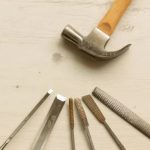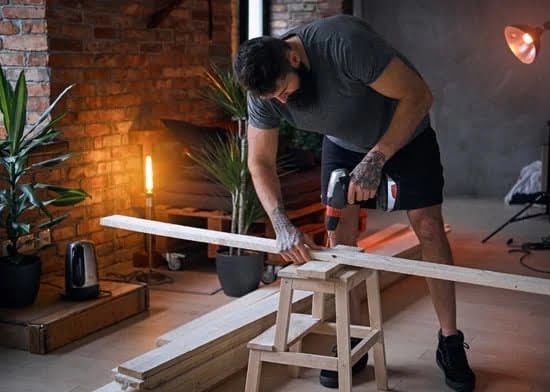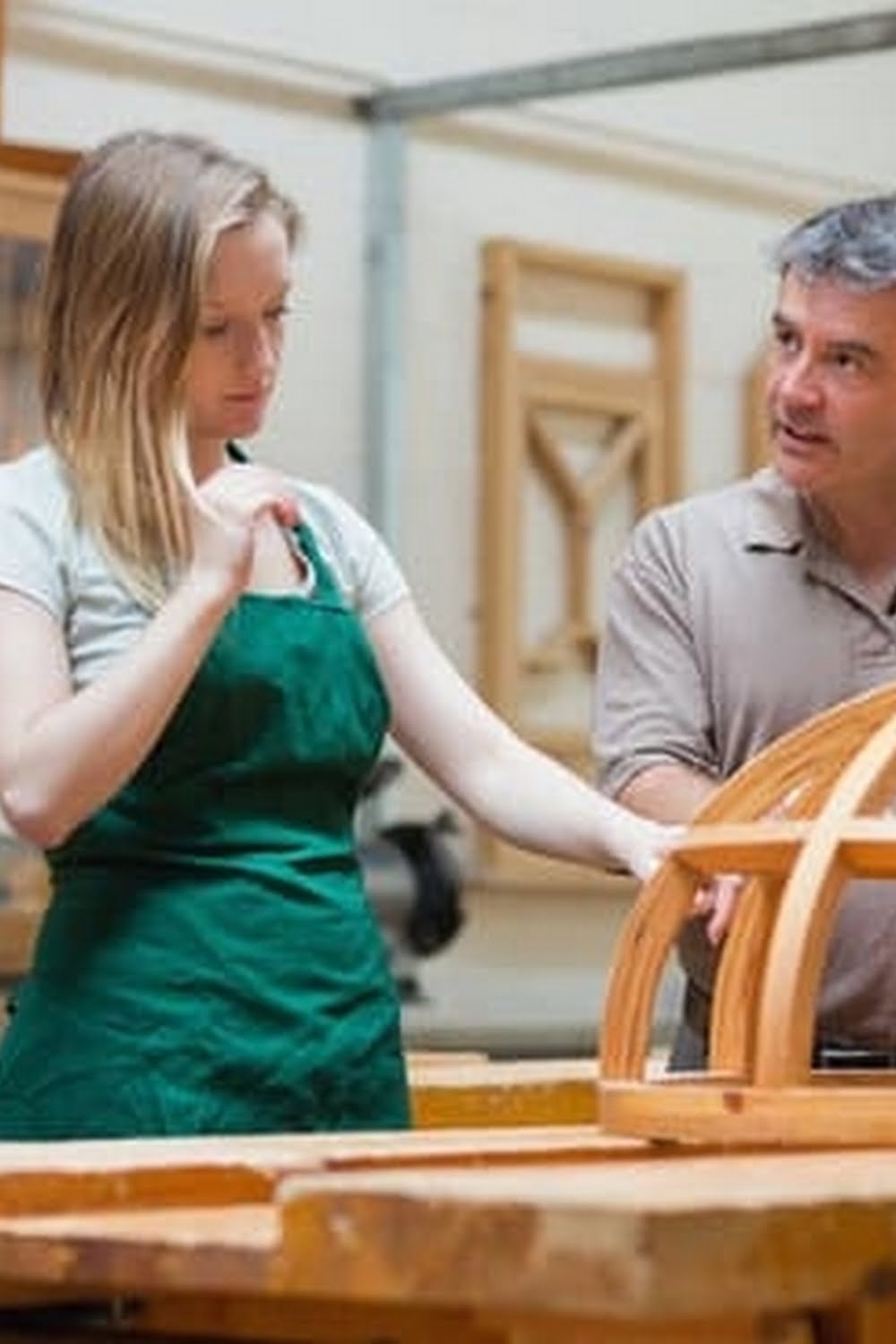Are you wondering, “Can I use B-I-N to spot prime woodwork?” Spot priming woodwork is a crucial step in the painting process. It involves applying primer to specific areas of the wood surface that require extra attention, such as knots or stains. In this article, we will explore the purpose of spot priming woodwork and specifically focus on using B-I-N as a primer for this process.
Spot priming woodwork serves the dual purpose of sealing and covering problem areas before applying the final coat of paint. The goal is to ensure an even and smooth surface for the topcoat while also preventing any underlying imperfections from bleeding through. This technique can save both time and money by addressing issues upfront and avoiding potential touch-ups later on.
B-I-N primer has gained popularity for spot priming woodwork due to its exceptional adhesion, fast drying time, and ability to seal problem areas effectively. In the following sections, we will delve into the benefits of using B-I-N for spot priming, provide a step-by-step guide for application, and offer troubleshooting tips for common issues that may arise during the process.
Whether you are a professional painter or a DIY enthusiast, understanding how to effectively spot prime with B-I-N can elevate the overall finish of your woodwork projects.
The Benefits of Using B-I-N for Spot Priming
Spot priming woodwork is an essential step in the painting process, as it helps to seal and prepare the surface for paint application. It also aids in ensuring that the final finish is smooth and even. When it comes to spot priming woodwork, using a high-quality primer like B-I-N can make a significant difference in the overall outcome of your project.
The benefits of using B-I-N for spot priming are numerous, making it a popular choice among DIY enthusiasts and professional painters alike. Here are some advantages of using B-I-N for spot priming:
- Excellent Adhesion: B-I-N has exceptional adhesion properties, allowing it to bond effectively with various wood surfaces.
- Quick Drying Time: This primer dries quickly, allowing for faster turnaround time on your painting project.
- Stain Blocking: B-I-N effectively blocks stains such as water stains, smoke damage, and knots in wood, preventing them from bleeding through the paint.
The ease of application and versatility of B-I-N makes it an ideal choice for spot priming woodwork. When properly applied, this primer can provide a sound foundation for the topcoat, ultimately resulting in a professional-looking finish.
In addition to its benefits, using B-I-N for spot priming also ensures that your woodwork is adequately protected from moisture and other environmental factors that can lead to deterioration over time. By investing in a high-quality primer like B-I-N, you can prolong the lifespan of your woodwork and maintain its aesthetic appeal for years to come.
Step-by-Step Guide to Spot Priming Woodwork With B-I-N
Spot priming woodwork with B-I-N is a crucial step in preparing the surface for painting. B-I-N is a shellac-based primer that is known for its excellent adhesion and stain-blocking properties. It can be used to spot prime woodwork to seal knots, sap streaks, and other types of discoloration that may bleed through the paint.
To begin spot priming woodwork with B-I-N, the first step is to ensure that the surface is clean and free of dust, dirt, and grease. Use a mild detergent and water to clean the woodwork, then allow it to dry completely before proceeding with the priming process.
Once the surface is clean, apply B-I-N using a high-quality brush or a lint-free roller. Be sure to stir the primer thoroughly before use and apply it in thin, even coats. Avoid overworking the primer as this may lead to brush marks or uneven coverage.
After applying the first coat, allow it to dry for at least 45 minutes before applying a second coat if necessary. Two coats of B-I-N are usually sufficient for spot priming woodwork, but you may need to apply additional coats if stubborn stains are still visible.
When spot priming woodwork with B-I-N, it’s important to work in a well-ventilated area and wear appropriate personal protective equipment (PPE) such as gloves and a mask to protect yourself from fumes.
| Advantages of Using B-I-N for Spot Priming | Application Tips for Spot Priming Woodwork |
|---|---|
| B-I-N offers excellent adhesion and stain-blocking properties | Clean the surface thoroughly before priming |
| It can effectively seal knots, sap streaks, and discoloration | Apply thin, even coats using a high-quality brush or roller |
| B-I-N dries quickly and allows for recoating in a short amount of time | Work in a well-ventilated area and wear appropriate PPE |
Preparing the Woodwork for Spot Priming
When it comes to spot priming woodwork, proper preparation is crucial to ensure the best results. Before applying B-I-N or any other primer, it’s important to prepare the woodwork surface to promote adhesion and longevity of the finish. This section will provide a step-by-step guide on how to prepare the woodwork for spot priming.
Clean the Surface
The first step in preparing woodwork for spot priming is to thoroughly clean the surface. Use a mild detergent and water solution to remove any dirt, grease, or grime from the woodwork. It’s important to ensure that the surface is completely clean and free of any contaminants that could affect adhesion.
Repair Any Damage
Inspect the woodwork for any damage such as dents, scratches, or holes. Use wood filler or putty to repair any imperfections in the surface. Allow it to dry completely before sanding the area smooth. This step will help create a uniform and smooth surface for spot priming.
Sand the Surface
Once the repairs are complete, lightly sand the entire woodwork surface with fine-grit sandpaper. This will help roughen up the surface and provide better adhesion for the primer. After sanding, be sure to wipe down the woodwork with a tack cloth to remove any dust or debris.
By following these steps to prepare your woodwork for spot priming with B-I-N or another primer, you can ensure that you achieve a smooth and well-adhered finish. Proper preparation is essential for getting the best results from your spot priming process.
Application Techniques for Achieving the Best Results
Spot priming woodwork is a crucial step in the process of painting or refinishing wood surfaces. When spot priming, it’s important to apply the primer with precision and care to achieve the best results.
B-I-N primer is a popular choice for spot priming woodwork due to its effectiveness in sealing stains and providing adhesion for the topcoat. Here are some application techniques to help you achieve the best results when using B-I-N for spot priming:
- Surface Preparation: Before applying B-I-N primer, it’s essential to properly prepare the woodwork. This includes cleaning the surface to remove any dirt, dust, or grime. Sanding the woodwork lightly can also help create a smooth and even surface for the primer to adhere to.
- Using the Right Tools: When applying B-I-N primer for spot priming, it’s recommended to use high-quality brushes or rollers specifically designed for use with shellac-based primers. These tools can help ensure an even application and smooth finish.
- Applying Thin Layers: One of the key techniques for achieving the best results with B-I-N primer is applying thin, even coats. Avoid overloading the brush or roller with primer, as this can lead to drips and uneven coverage. Instead, apply multiple thin layers, allowing each coat to dry completely before applying the next.
By following these application techniques, you can maximize the effectiveness of B-I-N primer for spot priming woodwork and ensure a professional-looking finish. Remember that proper application is essential for achieving optimal adhesion and stain-blocking properties.
When spot priming woodwork with B-I-N primer, it’s important to take your time and pay attention to detail in order to achieve the best results. Proper surface preparation, using the right tools, and applying thin layers will help you make the most of this versatile primer on your wood surfaces.
Troubleshooting Common Issues When Spot Priming With B-I-N
Spot priming woodwork with B-I-N can be a straightforward process, but like any DIY project, there are potential issues that may arise during the application. Understanding how to troubleshoot these common problems can help you achieve the best results and ensure a smooth finish on your woodwork.
One common issue that may occur when spot priming with B-I-N is poor adhesion. This can happen if the surface of the woodwork is not properly cleaned and prepared before applying the primer. To troubleshoot this issue, it’s essential to thoroughly clean the surface with a mild detergent and water, followed by a rinse and dry before applying the primer. Additionally, using a fine-grit sandpaper to lightly sand the surface can also improve adhesion.
Another issue that may arise is uneven coverage or streaking when spot priming with B-I-N. This can be caused by improper application techniques or using the wrong type of brush or roller.
To troubleshoot this problem, it’s important to use a high-quality synthetic brush or roller designed for use with shellac-based primers like B-I-N. Additionally, applying thin, even coats and allowing each coat to dry completely before applying another can also help prevent streaking and ensure uniform coverage.
In some cases, spot priming with B-I-N may result in an unpleasant odor lingering after application. This issue is common with shellac-based primers and can be particularly bothersome in enclosed spaces. To troubleshoot this problem, it’s important to ensure proper ventilation during and after application.
Opening windows and using fans can help dissipate the odor more quickly. It’s also important to consider using a respirator mask for added protection against fumes while working with B-I-N primer indoors.
Overall, being aware of these potential issues when spot priming woodwork with B-I-N can help you address them effectively and achieve professional-looking results for your project.
Alternative Products for Spot Priming Woodwork
When it comes to spot priming woodwork, there are several alternative products that can be used aside from B-I-N. While B-I-N is known for its effectiveness in spot priming, there are other options available in the market that you can consider based on your specific needs and preferences. One alternative to B-I-N is a shellac-based primer, which also offers excellent adhesion and stain-blocking properties.
Another alternative to B-I-N for spot priming woodwork is a water-based primer. This type of primer is known for its low odor, fast drying time, and easy cleanup with soap and water. It also provides good adhesion and can be used on both interior and exterior woodwork. Additionally, oil-based primers are another option for spot priming woodwork. These types of primers offer superior adhesion and are ideal for sealing stains and tannins on wood surfaces.
It’s important to consider the specific requirements of the woodwork when choosing an alternative product for spot priming. Factors such as the type of wood, level of staining or tannin bleed, and whether the woodwork is located indoors or outdoors can influence the choice of primer. Ultimately, selecting the right alternative product for spot priming woodwork will depend on your individual project needs.
| Alternative Primer | Key Features |
|---|---|
| Shellac-based Primer | Excellent adhesion and stain-blocking properties |
| Water-Based Primer | Low odor, fast drying time, easy cleanup with soap and water |
| Oil-Based Primer | Superior adhesion, ideal for sealing stains and tannins on wood surfaces |
Tips for Choosing the Right Primer for Your Woodwork
When it comes to choosing the right primer for your woodwork, there are a few key factors to consider. The type of wood, the existing finish, and the desired final result all play a role in selecting the best primer for your project. Here are some tips for choosing the right primer for your woodwork:
Consider the Type of Wood
Different types of wood may require different primers. For example, softwoods like pine may benefit from a different type of primer than hardwoods like oak. It’s important to choose a primer that is specifically formulated for the type of wood you are working with to ensure proper adhesion and long-lasting results.
Evaluate the Existing Finish
If your woodwork already has a finish on it, such as paint or stain, you’ll need to choose a primer that is compatible with that finish. Some primers are designed specifically for use over existing finishes, while others may not adhere properly or could cause issues like peeling or bubbling.
Assess Your Desired Final Result
Consider what you want your final result to look like when choosing a primer. Do you want a smooth, flawless finish? Are you looking to block stains or hide imperfections? Different primers offer different benefits, so it’s important to think about your ultimate goal for the project.
By taking into account these tips and considering factors such as the type of wood, existing finish, and desired final result, you can choose the right primer for your woodwork with confidence. Remember that using B-I-N as a spot primer can be an effective choice due to its fast-drying formula and superior adhesion properties.
Conclusion
In conclusion, B-I-N is a highly effective primer for spot priming woodwork. Its ability to seal in stains and odors, its fast drying time, and its versatility make it an ideal choice for this specific application. Spot priming with B-I-N not only saves time and effort, but it also ensures a smooth and long-lasting finish on wood surfaces.
When preparing the woodwork for spot priming, it is important to thoroughly clean and sand the area to ensure optimal adhesion. Additionally, following the step-by-step guide for spot priming woodwork with B-I-N will help achieve the best results. Proper application techniques such as using thin coats, allowing ample drying time, and avoiding overbrushing can make a significant difference in the final outcome.
While B-I-N is highly recommended for spot priming woodwork, it is also essential to consider alternative products based on specific project requirements. However, when choosing the right primer for your woodwork, carefully evaluating factors such as compatibility with paint type, desired finish, and level of protection can help determine the most suitable product for the job.
Overall, B-I-N has proven itself to be an effective solution for spot priming woodwork due to its sealing properties and ease of use. By understanding its purpose, benefits, and application techniques as outlined in this article, individuals can confidently utilize B-I-N to achieve professional results on their woodwork projects.
Frequently Asked Questions
Can Zinsser Bin Be Used as a Primer?
Yes, Zinsser Bin can be used as a primer. It is specifically designed to act as a high-performance sealer that effectively blocks stains, odors, and wood tannins to provide a smooth surface for painting.
Can Bin Primer Be Used on Wood?
Zinsser Bin primer can definitely be used on wood. In fact, it is known for its effectiveness on wood surfaces, including bare or stripped wood, plywood, and even wooden furniture. It helps to create a strong bond between the paint and the wood surface.
Can Shellac Be Used as a Primer?
Shellac can indeed be used as a primer. Its natural adhesion properties make it an excellent choice for providing a solid base for paint to adhere to. Shellac-based primers are especially useful for covering up stubborn stains or odors on various surfaces such as wood, metal, or masonry.

Hi everyone! I’m a woodworker and blogger, and this is my woodworking blog. In my blog, I share tips and tricks for woodworkers of all skill levels, as well as project ideas that you can try yourself.





